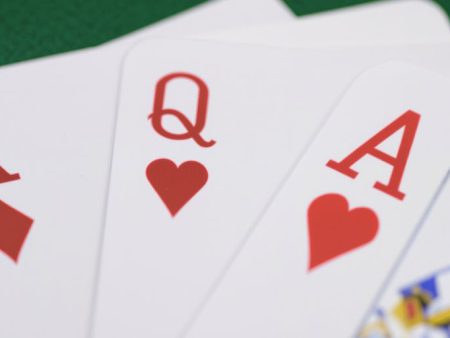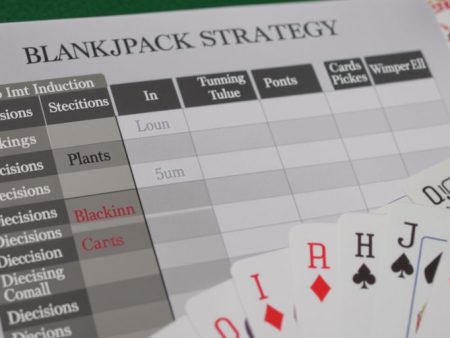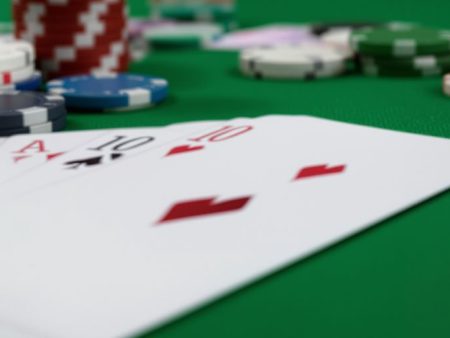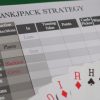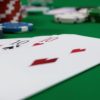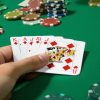So, you want to get better at blackjack, huh? It’s not just about luck; there’s a smart way to play that can really make a difference. We’re talking about blackjack basic strategy. It’s like a cheat sheet for the game, telling you the best move to make based on your cards and what the dealer is showing. Learning this stuff can seriously cut down the house’s advantage, making the game more fun and giving you better odds. Let’s break down how to use it.
Key Takeaways
- Understanding blackjack basic strategy means knowing the best move for every hand combination against the dealer’s upcard to reduce the house edge.
- Master hard hands by standing on 12-16 when the dealer shows a weak card (2-6) and hitting when they show a strong card (7-Ace).
- Split Aces and Eights always, and know when to split other pairs or treat them as hard hands.
- Take advantage of doubling down opportunities, especially on 11 against the dealer’s 2-10.
- Avoid side bets like insurance, manage your money by betting a small percentage of your bankroll per hand, and practice consistently to improve.
Understanding Blackjack Basic Strategy
Alright, let’s talk about blackjack. It’s not just about luck, you know. There’s a way to play that seriously cuts down the house’s advantage. It’s called basic strategy, and honestly, it’s your best friend at the table if you want to win more often. Think of it as the smartest way to play your hand based on what you’ve got and what the dealer is showing. It’s not some secret code; it’s just math, really. Following it means you’re making the best possible decision almost every single time. It’s not perfect, nothing is, but it gets you so close that the difference is tiny. You’ll be playing for hours and only making a mistake that costs you a little bit maybe once. That’s way better than just guessing, right? It’s the foundation for everything else if you want to get good at this game.
The Goal of Blackjack
The main point of blackjack is pretty simple: beat the dealer’s hand without going over 21. You’re not trying to get as close to 21 as possible in a vacuum; you’re directly competing against the person running the game. If your hand total is higher than the dealer’s, but still 21 or less, you win. If you bust (go over 21), you automatically lose, no matter what the dealer has. It’s a head-to-head battle, and knowing the dealer’s potential hand is half the battle.
How Basic Strategy Minimizes House Edge
The house edge is that built-in advantage the casino has. Basic strategy is designed to chip away at that edge. It tells you the mathematically best move for every single hand combination you can have against every possible dealer upcard. By consistently making these optimal plays, you reduce the casino’s advantage from something significant down to a very small percentage, sometimes less than half a percent. It’s like giving yourself the best possible odds in a game that’s otherwise stacked against you.
The Foundation of Optimal Play
Basic strategy is the bedrock of smart blackjack. Before you even think about card counting or fancy betting systems, you must know basic strategy. It’s the roadmap. Without it, you’re just fumbling in the dark. Mastering these plays means you’re making decisions that are proven to be the most profitable over the long run. It’s the first step, and honestly, it’s the most important one for anyone serious about winning at blackjack.
Mastering Hard Hands with Basic Strategy

Alright, let’s talk about hard hands in blackjack. These are hands that don’t contain an Ace, or if they do, the Ace is counted as a 1 so it doesn’t bust you. Mastering these is pretty key to not losing your shirt.
Standing on 12-16 Against Dealer’s Weak Cards
So, you’ve got a hand totaling 12, 13, 14, 15, or 16. Not exactly a powerhouse, right? Now, look at the dealer’s upcard. If it’s a 2, 3, 4, 5, or 6, that’s considered a weak card for the dealer. Why? Because these cards give the dealer a higher chance of busting. They have to hit until they reach at least 17, and these low cards mean they’ll often draw cards that push them over 21. So, what do you do? You stand. Yep, you just stop hitting. It feels weird, I know, especially with a 15 or 16, but trust me, the odds favor standing here. You’re letting the dealer do the risky work.
Hitting 12-16 Against Dealer’s Strong Cards
Now, flip that around. You still have that same 12-16 hand, but the dealer is showing a 7, 8, 9, 10, or an Ace. These are strong cards for the dealer. They’re much less likely to bust. In this situation, you absolutely have to hit. You need to try and improve your hand. A 12 is pretty bad, and a 16 is not much better. You’re hoping to draw a low card, like a 2, 3, or 4, to get you closer to 17 or higher without busting. It’s a gamble, sure, but standing with a 12-16 against a dealer’s strong card is a losing play more often than not. You gotta take a chance.
Strategic Decisions for 9, 10, and 11
These hands are where you can really start to make some moves. If you have a hard 9, you want to double down when the dealer shows a 3 through 6. Why? Because these are weak dealer cards, and doubling down lets you get more money on the table when you have a good chance of winning. If the dealer shows anything else (2, 7, 8, 9, 10, Ace), you just hit. For a hard 10, you double down against a dealer’s 2 through 9. That’s a lot of weak cards for the dealer, so you’re pushing your advantage. If the dealer shows a 10 or an Ace, you just hit. And for a hard 11? You almost always double down. The only time you don’t is if the dealer is showing an Ace, in which case you just hit. Getting 11 is great, you’re just one card away from 21, so you want to maximize your bet when the dealer isn’t showing that scary Ace.
Navigating Soft Hands in Blackjack

Soft hands in blackjack are a bit different, and honestly, they can be a lot of fun because you can’t bust them by hitting. That ace in your hand is like a wild card, counting as either 1 or 11. This flexibility means you can be a little more daring with your plays. It’s not as scary as holding a hard 17, that’s for sure.
Playing Soft Totals of 13-15
When you have a soft total of 13, 14, or 15, the basic strategy is pretty straightforward. You’re going to hit against most dealer upcards. The only time you might consider doubling down is if the dealer shows a weak card, like a 5 or 6. It’s a good way to try and build up your hand without much risk.
Strategies for Soft 16-18
Now, soft 16, 17, and 18 are where things get interesting. Against a dealer’s weak upcards (2 through 6), you’ll want to double down. This is your chance to really put pressure on the dealer. If doubling isn’t allowed, or the dealer shows a stronger card (7 through Ace), you should hit. For soft 18, if the dealer shows a 2, 7, or 8, you stand. It’s a tricky spot, but sticking to the chart helps.
Standing on Soft 19-21
Honestly, if you’ve got a soft 19, 20, or 21, you’re in a great position. These are strong hands, and you should always stand. There’s no need to risk busting when you’re already in a winning situation. Just let the dealer do their thing. It’s like having a safety net; you can’t lose on these hands by hitting.
The Art of Splitting Pairs
Splitting pairs is where things get really interesting in blackjack. It’s not just about having two of the same card; it’s about understanding when that pair becomes a powerful opportunity or a potential trap. Think of it like this: you’ve got a pair of 8s, which is a terrible 16. But if you split them, you’re starting two new hands, hopefully with better chances to win. It’s a game changer, but you gotta know the rules.
Always Split Aces and Eights
This is non-negotiable. Aces are your best friend in blackjack. Splitting them gives you two chances to hit 21, or at least a strong 11. You’re basically starting two new hands with a great foundation. And eights? Well, a pair of eights makes a 16, which is usually a bad spot to be in. You’re often going to hit and bust. But split those eights, and you’re starting two hands with a much more manageable 8. It’s a smart move, every single time.
When to Split Other Pairs
This is where it gets a bit more nuanced. Not all pairs are created equal, and your decision depends heavily on what the dealer is showing.
- Twos and Threes: Split these against a dealer’s 2 through 7. Any weaker, and you’re better off hitting.
- Fours: Only split fours if the dealer shows a 5 or 6. Otherwise, treat them as a hard 8 and hit.
- Sixes: Split sixes against a dealer’s 2 through 6. If the dealer shows 7 or higher, hit.
- Nines: This is a fun one. Split nines against the dealer’s 2 through 9, but stand if the dealer shows a 10 or an Ace. You’re feeling pretty good with nines against most dealer upcards.
- Fives: You never split fives. Instead, you treat them as a hard 10 and double down whenever the dealer shows a 2 through 9. It’s a powerful play.
Treating Unsplit Pairs as Hard Hands
This is super important. If basic strategy tells you not to split a pair, you don’t just ignore those cards. You combine them and play them as a hard total. For example, if you have two 4s and the dealer is showing a 7, you don’t split. You treat your 4s as a hard 8 and hit. It’s all about making the best possible play with the cards you have, and sometimes that means not splitting.
Leveraging Double Down Opportunities
Doubling down is one of those moves that can really boost your winnings when you play your cards right. It’s basically a way to double your bet after you get your first two cards, but you only get one more card. So, you gotta be pretty sure you’re going to get a good one. It’s a powerful tool, but you can’t just do it willy-nilly.
Doubling Down on 11
This is probably the most straightforward double down situation. If your first two cards add up to 11, and the dealer is showing a card from 2 all the way up to 10, you should absolutely double down. Why? Because there’s a really good chance you’ll draw a 10-value card (that’s any 10, Jack, Queen, or King). Getting an 11 and then drawing a 10 gives you a total of 21, which is blackjack! Even if you don’t get a 10, you’re still likely to get a strong hand. It’s a high-probability situation for a win.
When to Double Down on 10 and 9
Doubling down on 10 is also a pretty good bet when the dealer’s upcard is weak. Specifically, if you have a total of 10, and the dealer shows a 2 through 9, you should consider doubling. Again, you’re hoping for that 10-value card to make 20. It’s a solid play. For a total of 9, you should double down when the dealer shows a 2 through 6. This is a bit more of a risk, but the odds are still in your favor for improvement, especially against those weaker dealer cards.
Doubling Down on Soft Hands
Soft hands, those with an Ace that can be counted as 11, offer some unique doubling opportunities. If you have an Ace and a 5 (making a soft 16), and the dealer shows a 2 through 6, you can double down. You’re not going to bust if you draw a low card because the Ace can just become a 1. For example, if you have Ace-5 and draw a 4, your hand is now 10 (Ace as 1) and 4, which is 14. If you draw a 7, the Ace stays 11 and you have 18. It’s a flexible play. You can also double down on soft 17 (Ace-6) and soft 18 (Ace-7) in specific situations, usually when the dealer has a weak upcard. It’s all about maximizing your advantage when the dealer looks vulnerable.
Understanding Dealer’s Upcard Influence

The dealer’s upcard is like a giant flashing sign telling you what they might have. It’s the most important piece of information you get at the table, besides your own cards, of course. Ignoring it is like playing blindfolded. Seriously, it dictates so much of your decision making. You gotta pay attention to it.
Identifying Dealer Bust Cards
Some cards the dealer shows are way more likely to make them bust, meaning they go over 21. These are usually the low cards, like a 2 through a 6. When the dealer shows one of these, it’s a good sign for you. They have a higher chance of busting, so you can be a bit more conservative with your own play. This is your golden opportunity to stand on hands you might normally hit.
Recognizing Dealer’s Strong Upcards
On the flip side, when the dealer shows a 7, 8, 9, 10, or an Ace, that’s a strong upcard. These cards mean the dealer is much more likely to make a good hand, or at least not bust. When you see these, you need to play more aggressively. You might have to hit hands you’d normally stand on, or even double down when you normally wouldn’t. It’s all about trying to beat their potential strong hand.
Adapting Your Play to the Dealer’s Hand
So, how do you actually use this info? It’s all about matching your basic strategy decisions to what the dealer is showing. For example, if the dealer shows a 5 (a bust card), you might stand on a hard 12. But if they show a 10 (a strong card), you’ll probably want to hit that hard 12. It’s a constant back-and-forth, a dance really, between your hand and theirs. You’re always trying to predict what they’ll do and make the best move for yourself. It’s not rocket science, but it does take some practice to get it right. You’ll see charts that lay this out, and they’re super helpful when you’re starting out. Just remember, the dealer’s upcard is your biggest clue.
Avoiding Common Blackjack Pitfalls
Alright, let’s talk about the stuff you really want to avoid at the blackjack table. It’s easy to get caught up in the excitement, but some common moves can really eat away at your bankroll faster than you can say ‘dealer busts’. We’re going to break down these pitfalls so you can sidestep them and keep more of your hard-earned cash.
The Danger of Insurance Bets
So, the dealer’s showing an Ace. They offer you ‘insurance’. It sounds like a good idea, right? Like you’re protecting yourself. But here’s the deal: statistically, this bet is a loser in the long run. It’s basically a side bet on whether the dealer has blackjack, and the odds are stacked against you. Never take the insurance bet. It’s a quick way to lose money, plain and simple. Stick to your basic strategy; it’s way more reliable.
Why ‘Even Money’ is Not Advantageous
This one’s a bit like insurance, but it happens when you get a blackjack yourself and the dealer is showing an Ace. They’ll offer you ‘even money’ – meaning you get paid 1:1 on your bet instead of the usual 3:2. If you take it, you get a guaranteed win, but it’s less than you could potentially win. If you decline and the dealer doesn’t have blackjack, you win big (3:2). If they do have blackjack, you just push, meaning you get your original bet back. So, declining even money and going for the 3:2 payout is almost always the better play, even if it feels a little risky.
The Strategy of Surrender
Surrender? Yeah, it’s a thing in some blackjack games. It means you can give up half your bet and fold your hand before the dealer finishes their turn. When should you do this? Generally, you only consider surrendering when you have a really bad hand, like a hard 16, and the dealer is showing a strong card, like a 10 or an Ace. It’s not a common play, and not all casinos offer it, but knowing when it’s an option can save you some cash when you’re really in a bind. If surrender isn’t allowed, you just play it as a hard hand according to basic strategy.
Bankroll Management for Consistent Play
Alright, let’s talk about keeping your head above water when you’re at the blackjack table. It’s not just about knowing when to hit or stand; it’s about making sure you don’t blow through your cash before you even get a good feel for the game. This is where bankroll management comes in, and honestly, it’s probably more important than knowing every single basic strategy play. You gotta treat your blackjack money like, well, money you actually need. Don’t go betting your rent money, okay? That’s just asking for trouble.
Setting a Session Budget
Before you even sit down, decide how much you’re willing to lose for that session. Seriously, write it down if you have to. This isn’t a suggestion; it’s a hard limit. If you hit that number, you walk away. No ifs, ands, or buts. It’s tough, I know, especially when you feel like you’re on the verge of a big win, but sticking to your budget is key to playing another day. Think of it as a ticket price for entertainment.
Risking a Small Percentage Per Hand
Now, within that session budget, you need to figure out how much you’re going to bet on each hand. A good rule of thumb, and one that many pros swear by, is to risk only about 1% to 2% of your total bankroll on any single hand. So, if you have $500 set aside for blackjack for the month, you’re looking at betting $5 to $10 per hand. This might seem small, but it protects you from those nasty losing streaks that can happen in blackjack. It spreads your risk out.
Here’s a quick look at how that might play out:
| Total Bankroll | 1% Bet Per Hand | 2% Bet Per Hand |
|---|---|---|
| $100 | $1 | $2 |
| $500 | $5 | $10 |
| $1000 | $10 | $20 |
| $5000 | $50 | $100 |
Avoiding Emotional Betting
This is where things get tricky for a lot of people. You win a few hands, you feel like a genius, and suddenly you’re betting way more than you planned. Or, you lose a few, get frustrated, and start chasing losses with bigger bets. Stop. Just stop. Take a breath. If you feel yourself getting worked up, step away from the table for a bit. Clear your head. Emotional decisions are almost always bad decisions in blackjack. Stick to the plan, stick to the strategy, and don’t let your feelings dictate your bets. It’s a marathon, not a sprint, and managing your money means managing your emotions too.
Practicing Blackjack Basic Strategy
So, you’ve got the basic strategy down, or at least you’re trying to. That’s awesome! But knowing it and doing it are two different things, right? It’s like knowing how to cook a fancy meal versus actually pulling it off without burning down the kitchen. Practice is where the magic happens, or at least where you stop making those facepalm-worthy mistakes. Don’t just stare at the charts; you gotta get your hands dirty, so to speak.
Using Strategy Charts Effectively
Look, those charts can seem like a foreign language at first. They’re packed with info, telling you exactly what to do with your hand versus what the dealer’s showing. It’s a lot to take in. The trick is to use them as a guide, not a crutch you’ll have forever. Start by focusing on one section at a time. Maybe tackle all the hard hands first, then move to soft hands, and then the splits. The goal is to internalize this information so you don’t need the chart anymore. Some casinos actually let you use them at the table, which is a nice perk if you’re still learning. Just try not to hold up the game too much while you’re consulting your cheat sheet.
Simulating Hands for Practice
This is where you really get to test yourself. You can find tons of online blackjack simulators or even just use a deck of cards and a friend. Deal out hands, call out what you’d do based on basic strategy, and see if you’re right. It’s a low-stakes way to build confidence. You can even set up scenarios: "Okay, I have a hard 16, dealer shows a 10." What’s the play? Stand? Hit? This kind of repetition is key. It helps your brain make the right decision automatically, without you even having to think too hard about it. It’s like practicing scales on a piano; the more you do it, the more natural it becomes.
Transitioning to Casino Play with Small Bets
When you feel ready to hit the real tables, don’t just jump in with your life savings. Find a casino that offers lower minimum bets. These are your training grounds. You’re there to apply what you’ve practiced, not to win big right away. Treat each hand as a learning opportunity. Did you make the right play? Did it work out? If not, why? It’s okay to make mistakes; everyone does. The important thing is to learn from them and keep applying the basic strategy. You’ll get a feel for the pace of the game, the other players, and the dealer’s actions. It’s a different vibe than playing online, for sure.
The Importance of a Winning Mindset

Winning at blackjack isn’t just about knowing the moves; it’s about your head game. You gotta have the right mindset, or all that strategy you learned goes out the window when the pressure’s on. It’s like trying to cook a fancy meal but forgetting the salt – something’s missing.
Accepting Variance in Blackjack
Look, you’re going to have losing sessions. It’s a fact of life in blackjack, just like taxes. The cards don’t always fall your way, even when you play perfectly. You might get dealt a bunch of stiff hands against dealer blackjacks, or your doubles might get busted. This is called variance, and it’s totally normal. Don’t let a few bad runs get you down. Focus on making the right decisions, not on the short-term results. Over the long haul, playing correctly is what matters.
Staying Calm Under Pressure
When the dealer is on a roll, or you’ve just lost a big hand, it’s easy to get flustered. Your heart rate goes up, you start second guessing yourself, and suddenly you’re hitting a 16 against a 5. Bad move. You need to train yourself to stay cool. Take a deep breath. Remember your strategy. If you feel yourself getting emotional, it’s okay to take a short break. Come back when you’re feeling more centered. It’s better to step away for a few minutes than to blow your bankroll with bad decisions.
Focusing on Decisions, Not Outcomes
This is the big one. You can play a hand perfectly, following basic strategy to the letter, and still lose. That’s blackjack. Conversely, you can make a terrible decision and get lucky. Don’t let the lucky bad decisions fool you into thinking they’re good plays. Your goal is to make the best possible decision with the information you have at that moment. If you do that consistently, the wins will come. It’s about playing the probabilities, not trying to predict the future. Think of it like this:
| Your Hand | Dealer’s Upcard | Correct Decision | Outcome (Example) |
|---|---|---|---|
| 16 | 7 | Hit | You draw a 5 (Total 21), Dealer has 18 |
| 16 | 7 | Hit | You draw a 10 (Bust), Dealer has 18 |
In both cases, hitting the 16 against a 7 was the correct play. The outcome is out of your control. Your job is to make the play that gives you the best chance, regardless of what happens next.
Variations in Blackjack Basic Strategy
Dealer Hits or Stands on Soft 17
So, you’ve got the basic strategy down pat, right? Well, hold on a sec, because not all blackjack games are created equal. One of the biggest differences you’ll run into is whether the dealer hits or stands on a soft 17. This might seem like a small detail, but it actually changes the optimal play in a few spots. When the dealer stands on soft 17 (often called "S17"), it’s a little better for you, the player. The house edge shrinks just a bit. Conversely, if the dealer hits on soft 17 ("H17"), which is pretty common, the house edge creeps up slightly. This means you might need to adjust your strategy in a few specific situations, like when you have a hard 15 or 16 against the dealer’s 7. The charts you see usually specify which rule they’re based on, so always check that first. It’s not a huge change, but hey, every little bit helps when you’re trying to win.
Single Deck vs. Multiple Deck Games
Another thing that messes with basic strategy is the number of decks used. Playing with a single deck is generally more favorable to the player than playing with, say, six or eight decks. Why? Because it’s easier to track cards and get a sense of what might be left in the shoe. This is where card counting really shines, but even without counting, the probabilities shift. Basic strategy charts are often designed with multiple decks in mind, but if you find yourself at a single-deck game, there might be slight adjustments you can make. For instance, you might be more inclined to double down in certain situations. It’s a subtle difference, but if you’re serious about mastering the game, you’ll want to be aware of it. The fewer decks, the better for your odds.
Adapting to Different Rule Sets
Blackjack is a game with a lot of little rules that can change from casino to casino, or even table to table. Besides the dealer hitting or standing on soft 17, and the number of decks, you’ll see variations in things like:
- Blackjack Payouts: Most games pay 3:2 for a blackjack, but some might pay 6:5. That 6:5 payout is a killer for your odds, so try to avoid those tables if you can.
- Doubling Down Rules: Some games let you double down on any two cards, while others restrict it to totals of 9, 10, or 11. Some even let you double down after splitting pairs.
- Splitting Rules: Can you re-split pairs? Can you only hit one card on split Aces? These details matter.
- Surrender Options: Some games offer surrender, allowing you to give up half your bet and fold your hand in bad situations. Knowing when to surrender is part of advanced strategy.
Each of these rule variations can slightly alter the mathematically correct basic strategy. While the core principles remain the same, being aware of these differences and how they impact your decisions is key to truly optimizing your play. It’s like learning a language; you get the basics, but then you learn the dialects. You gotta pay attention to the specifics of the game you’re playing.
Keep Playing and Keep Winning
So, you’ve learned the ropes of basic strategy. It’s not rocket science, but it does take some practice. Remember those charts? They’re your best friend at the table. Don’t get discouraged if you don’t get it perfect right away. Even experienced players sometimes slip up. The key is to keep at it, manage your money, and try not to let a bad hand ruin your whole session. Stick with what you’ve learned, and you’ll definitely see an improvement in your game. Now go hit those tables and put your new skills to the test!
Frequently Asked Questions
What exactly is basic strategy in blackjack?
Basic strategy is like a secret map for blackjack. It tells you the best move to make based on your cards and the dealer’s visible card. Following it helps you win more often by making smart choices, like when to take another card or when to stop.
How can I get better at using basic strategy?
You can get really good at basic strategy by practicing! Think of it like learning a new sport. You can use practice charts, play pretend games at home, or even play with small bets at a casino to get the hang of it.
Should I ever take the ‘insurance’ bet when the dealer shows an Ace?
No, you shouldn’t buy insurance. It’s like a side bet that usually doesn’t pay off in the long run. It’s better to stick to the main game and use your basic strategy moves.
When is it a good idea to split my cards?
When you have a pair of Aces or Eights, always split them! Splitting Aces gives you two chances to get a good hand, and splitting Eights helps you avoid a bad total of 16.
What does it mean to ‘double down’ and when should I do it?
Doubling down means you double your bet after getting your first two cards, and you only get one more card. It’s a smart move when you have a strong hand, like an 11, and the dealer has a weak card.
Why is the dealer’s visible card so important?
The dealer’s visible card is super important! If it’s a low card (like 2 to 6), the dealer might ‘bust’ (go over 21). If it’s a high card (like 7 to Ace), the dealer probably has a strong hand, so you need to play more carefully.
Is it important to manage my money when playing blackjack?
Yes, managing your money is key! Set a budget for how much you’ll play with and how much you’re willing to bet per hand. This helps you avoid losing too much money and keeps the game fun.
Where does basic strategy come from?
Basic strategy is based on math and computer programs that figured out the best way to play millions of hands. It’s designed to lower the casino’s advantage, but it doesn’t guarantee you’ll win every time.
